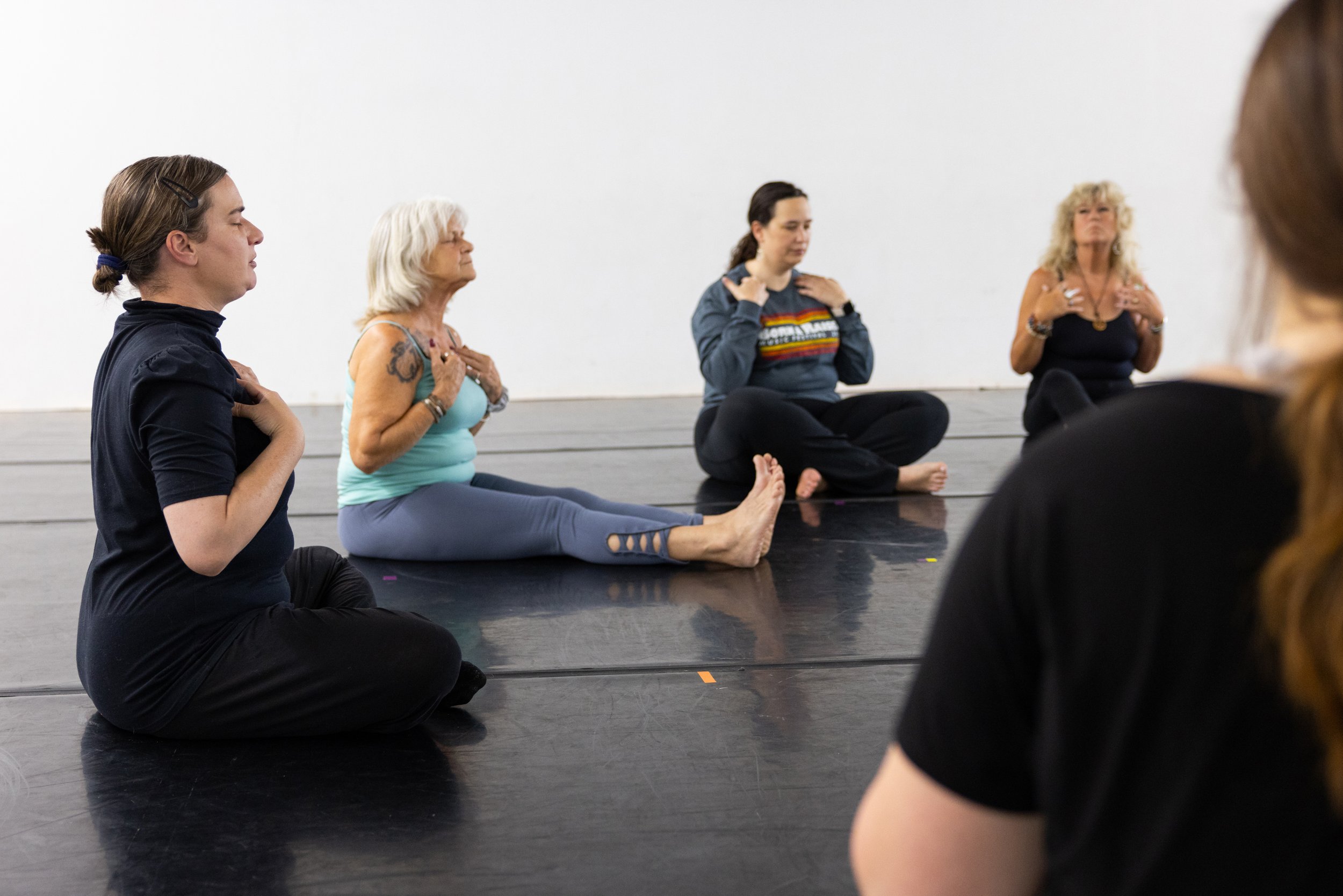Healing Through Movement Part 3: The Amazing Benefits of Somatic Movement
We hear a lot about somatic movement these days, and there’s a good reason for it. As
we learn more about the mind/body connection, the management of chronic pain, and
the mental and physical processing of grief and trauma, we discover a practice that can
address it all.
In the health and wellness industry, the term “somatic” has become something of a
buzzword. But any type of movement or therapy that involves focus on the mind/body
connection can be described as somatic. In somatic practice, we focus on the internal
sensation and experience of a movement instead of pushing our bodies to move in a
certain way.
Simply put, somatic movement is mindful movement that encourages us to observe how
we feel as we move our bodies. Somatic stretching helps promote mind-body
awareness, reduce stress, and ease muscle tension. While the practice of somatic
movement is specific and considered a category unto its own, other mind-body
practices such as yoga, tai chi, Pilates, and even mindful walking are all forms of
somatic movement.
The key is in how you approach your practice. When moving mindfully, it's not about the
number of reps or speed of movement and agility. The emphasis is on the process and
what you’re feeling in your body at that moment. This means that what you experience
will likely be unique with every practice.
First and foremost, somatic movement is exploratory. Even when practicing somatic
movement with the intention of releasing muscle tension, relieving pain, improving
posture, or letting go of stress, there is still a need to focus on exploring the internal
experience and process of our movements rather than the end result.
This can be a challenge for a lot of us at first. We’re accustomed to doing certain
movements a certain number of times so that we can achieve a certain goal. But that
doesn’t allow us to discover the long-held patterns that exist within us, and it doesn’t
allow us to develop new, healthy patterns of movement.
Practicing somatic movement is very different from doing sit ups or pushups; it’s not
about the quantity or intensity, it’s about the quality of exploration and conscious
attention to internal sensations.
The human nervous system, which controls muscle tension, posture, and movement,
must learn slowly. The goal is to forge new neural pathways rather than reinforce
existing patterns that are deeply learned in our nervous systems. Over time, we can
gradually speed up to perform movements more quickly while still maintaining correct
form and muscular control. This allows us to address ingrained motor patterns and
eventually retrain our muscle memories.
Our muscles need a deep release from the tension our brains are telling us to hold onto.
Retraining our muscle memories can promote the release of chronic muscle tension,
provide relief from chronic pain, improve our posture, and aid in recovery from many
common musculoskeletal conditions.
Whether guided by a certified instructor, or practiced on our own as part of a self-care
regimen, somatic movement can release tension, relieve pain, and improve our somatic
functioning throughout our lives. Be present, be patient, and prepare to be amazed by
the many benefits of somatic movement.
THE BENEFITS:
Stress management: Somatic therapy can help reduce stress and address physical and
emotional issues.
Pain relief: Somatic movement can help reduce physical pain, especially pain caused by
unnecessary muscle tension.
Improved mobility: Somatic movement can help improve mobility and range of motion.
Improved posture and balance: Regular somatic movement can help improve posture
and balance.
Mind-body connection: Somatic stretching can help strengthen the mind-body
connection, which can help with overall health management.
Trauma healing: Somatic Experiencing can help heal trauma by helping people notice
suppressed physical sensations associated with trauma.
Standing awareness: Somatic exercises can help people become more aware of their
bodies and pinpoint tense or painful areas.
Easier breathing: Combining somatic movement sequences with breathing can help
people relax their muscles and reduce feelings of tightness and pain.
Mind-body integration: Somatic mindfulness can help create mind-body integration
and reduce hyperarousal in the nervous system.
Tension release: Somatic release is a series of small movements that can relieve pain
and excess tension.

